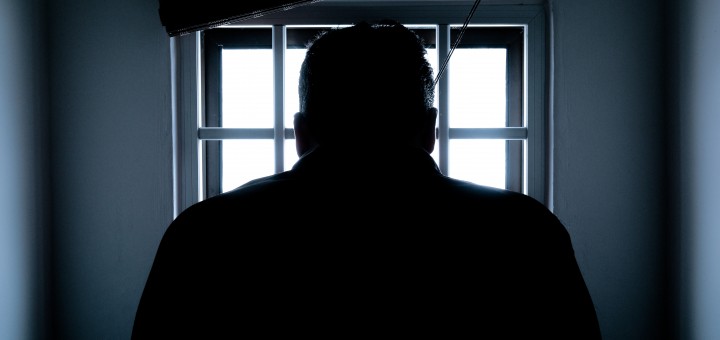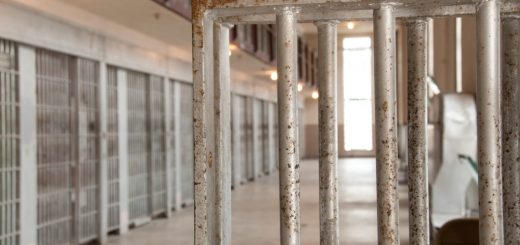You are not Alone: Ontario and British Columbia Invalidate Solitary Confinement

If one were to write the book on section 7 Charter litigation, I think it would be safe to say that we just started a new chapter.
This chapter’s narrative, starting where Carter v Canada (Attorney General), 2015 SCC 5 has left off, would cover section 7 and prison reform, particularly the two challenges to Canada’s solitary confinement (or “administrative segregation”). Two trial-level decisions were released recently—one out of Ontario and the other British Columbia—both regarding the constitutionality of sections 31-37 of the Corrections and Conditional Release Act, SC 1992, c 20 [CCRA]. Corporation of the Canadian Civil Liberties Association vs Canada (Attorney General), 2017 ONSC 7491 [Ontario] was heard over three days in September 2017 with the 278-paragraph decision released in December 2017. British Columbia Civil Liberties Association v Canada (Attorney General), 2018 BCSC 62 [British Columbia], brought by both the British Columbia Civil Liberties Association (“BCCLA”) and John Howard Society, was heard through July and August 2017, with the 612-paragraph decision released in mid-January 2018.
The decisions contain a lot of interesting legal food for thought: they touch on the nature and limits of public interest standing, the role of expert and lay witnesses, and suspended declarations of invalidity. The cases also enter into the ongoing conversation about prison reform, following on the heels of the Arbour Commission (1996) and the Ashley Smith Inquest (2013). The BCCLA and CCLA also argued that prison policy should consider the adverse impacts of a ‘neutral’ regime on specific sectors of the population—those with mental illness, youth, and Aboriginal peoples—with varying success. While both decisions found that the impugned sections violated section 7 of the Charter (the right to life, liberty, and security), the nature of the violation and the requisite remedy differed. This article will compare the section 7 analysis and remedies, concluding with some remarks on where this decision leaves the state of solitary confinement in Canada’s prisons.
A problem with the law or its execution? Administrative Segregation and Section 7
Both the Ontario and British Columbia cases sought a declaration that sections 31-37 of the CCRA are invalid, pursuant to section 52(1) of the Charter. These provisions establish the process for deciding when to order and/or release a prison inmate from administrative segregation. They list the grounds for segregating individuals and specify that the “institutional head” or warden is the individual responsible for deciding and reviewing segregation decisions. While these provisions serve as the foundation for the segregation scheme and the basis for the legal claim, an additional web of regulations and directives is involved in the confinement procedure.
However, the types of legal claims that could be made to challenge solitary confinement in practice were restricted by both precedent and the nature of the parties in this case. The practice of solitary confinement can have significant adverse effects on the individuals subjected to it, especially after prolonged periods of segregation. Yet the parties in these cases weren’t individuals who had been in solitary confinement, but rather they were organizations. It would be impossible for the parties bringing the case under public interest standing to seek a remedy under section 24(1) for individual Charter violations. Given the litigants’ public interest standing, only a declaration under section 52(1) that the law was invalid and of no force or effect was available.
The claim was further restricted by a precedent set in Little Sisters: the fact that a valid law is executed in non-Charter compliant manner doesn’t invalidate the law itself (Little Sisters Book and Art Emporium v Canada (Minister of Justice), 2000 SCC 69, para 79). If the problem is with the law’s execution, such as the regulations issued pursuant to the statutory scheme, no remedy exists under section 52(1) of the Charter. These two factors meant that the applicants were restricted to arguing the invalidity of a portion of the CCRA itself and could not make claims respecting individual Charter breaches nor the regulatory framework for executing the law. Given the unique characteristics and ensuing restrictions of this litigation, expert and “lay” evidence play a pivotal role in both decisions, especially the British Columbia decision.
Notably, the nature of the claim was different between the two cases. In Ontario, the CCLA asserted that sections 31-37 of the CCRA were in violation of section 7, 11(h) and 12 of the Charter. Meanwhile, the BCCLA and John Howard Society claimed that the same provisions violated the Charter’s section 7, 9, 10, 12, and 15 rights. The bulk of the analysis in both decisions centered on section 7, and given the nature of the claim and section 7’s promise, it’s not entirely surprising that both Judges found violations.
Section 7 of the Canadian Charter of Rights and Freedoms guarantees:
“Everyone has the right to life, liberty and security of the person and the right not to be deprived thereof except in accordance with the principles of fundamental justice.”
A government law or action infringing section 7, then, engages life, liberty, or security of the person in a way that violates the principles of fundamental justice. The Supreme Court of Canada in recent cases such as Bedford v Canada, 2013 SCC 72 has articulated a structured two-part section 7 test that first considers infringements to life, liberty, and security of the person and then violations of the principles of fundamental justice. This structured analysis was used in both the British Columbia and Ontario cases, but the Judges in the respective cases found different rights infringements and different violations of fundamental justice.
The Ontario Analysis
Associate Chief Justice Marrocco of the Ontario Superior Court found that the impugned provisions were a deprivation of liberty since they put individual in a “prison within a prison” (Ontario, para 87). He also found that the administrative segregation scheme was a violation of security of the person since it causes psychological stress leading to potentially permanent negative mental health defects (paras 97, 101). Justice Morrocco did not consider the relationship between solitary confinement and the right to life because it was not advanced by the applicants (para 81).
Not only was it found that the solitary confinement scheme violates the right to liberty and security of the person, it was also held to offend the principles of fundamental justice, specifically procedural fairness. Here, Justice Morrocco juxtaposed the purpose of the scheme—to promote the safety and security of prison inmates and staff—with its effect of insulating the warden’s decision to segregate from any further review. In brief, because the scheme allows the warden to serve as both prosecutor and judge it violates procedural fairness, a principle of fundamental justice (Ontario, paras 150-152; 155-156). After finding that the section 7 violation could not be saved under section 1, Justice Morrocco ordered that any decision to segregate an individual must involve independent review. This review, conducted by tribunal staffed by Correctional Services Canada (“CSC”) personnel, would under certain (specified) conditions satisfy the requirements of impartiality and independence.
Justice Morrocco didn’t find that the scheme violated section 11(h) – the right not to be punished again for the same offence – because segregation is not a sentence available to judges, it doesn’t extend the sentencing period, and prisoners know that segregation is a possibility when being sentenced (Ontario, para 187-188). He also declined to declare segregation cruel and unusual punishment under section 12, rejecting the call for absolute limits on the amount of time an individual could spend in isolation (para 270). Despite recognizing the significant harms caused by solitary confinement, the CCLA is left with a somewhat hollow victory.
Meanwhile in British Columbia…
Justice Leask of the British Columbia Supreme Court prefaced his reasons with a note regarding the substantial volume of evidence presented at trial. The voluminous record is evident in the decision, as Justice Leask details individuals’ experiences and expert testimony to support his analysis. In addition to finding violations of liberty and security of the person, Justice Leask also found that “suicide is proportionally more prevalent amongst inmates in segregation” (British Columbia, para 264). He found that the causal connection between segregation and self-harm is a matter of “common sense,” supported both by studies and the disproportionate number of suicides in segregation (para 269). This, therefore, engages section 7 rights.
The British Columbia decision also acknowledged the dynamics between the scheme and the principles of fundamental justice. For Justice Leask, unlike in the Ontario case, the scheme is not arbitrary, because there are legitimate safety and security purposes for ordering administrative segregation. However, the provisions were deemed to be overbroad because (1) segregation that is more than temporary causes harm and (2) because there are often less restrictive means of achieving the same security objective. Similar to the Ontario analysis, the scheme failed to meet the requirements of procedural fairness (British Columbia, para 355). However, contrary to Justice Morrocco, Justice Leask found that a procedurally fair regime would require review by a party independent of CSC (paras 409-410).
The Court also held that the system discriminated against indigenous and mentally ill inmates, contrary to section 15, and found that there should be a 15-day limit on time spent in segregation.
Conclusion
The next chapter in the Section 7 book has been started, but the story is definitely far from over. Both decisions can be considered a ‘win’ for the CCLA, BCCLA, John Howard Society, and prison reform advocates more generally. However, the actual change in the law stemming from the decisions remains to be seen. For one, both decisions apply a suspended declaration of invalidity for 12 months, meaning the solitary confinement as it is currently practiced—although deemed unconstitutional—will not change for at least a year.
But it will likely be more than a year before we see any significant change as a direct result of the litigation, as the decisions will likely be appealed. Beyond the usual incentives for parties to appeal a decision (motives that are more pronounced in law reform cases with potentially significant impact) there are two other reasons to expect appeals. First, while the Ontario decision recognizes the section 7 infringement, the actual remedy is somewhat unsatisfying, especially in comparison to the British Columbia decision. It’s unclear how independent review alone will address the actual psychological and physical harms sustained by individuals who have experienced solitary confinement. Such a remedy doesn’t cap the amount of time an inmate will spend in solitary confinement, nor will the review in and of itself alleviate the particular harms experienced by youth and those with mental illness. In fact, the CCLA has already filed an appeal at the Ontario Court of Appeal. Second, the decisions have left us with a landscape where two provincial courts, based on different evidentiary records and slightly different claims, have invalidated the same federal provisions but for different reasons. Not only do we have a divergence of legal analysis, but the minimal requirements for making the scheme Charter-complaint are different.
Yet the courts are not the only institution considering solitary confinement policy; the same problems are concurrently being considered by Canada’s human rights and legislative bodies. The federal government tabled legislation last summer that would reform parts of the system, including imposing limits on time spent in segregation. Recently, an Ontario Human Rights Commission complaint initiated in 2012 concluded with the Ontario Government agreeing to no longer place mentally ill inmates in administrative segregation. As the litigation winds its way through the courts, solitary confinement practices are changing.
So are we seeing a “dialogue” moment (as Justice Morrocco would see it) where the Courts and Parliament are in “conversation about the constitutional appropriateness of sections 31-37” of the CCRA (Ontario, para 276)? Or is a constituency that is determined to see the end of solitary confinement attempting to achieve reform through whichever means possible? Either way, hopefully this chapter of section 7 litigation will end with fairer and less harmful conditions for imprisoned individuals.







Join the conversation